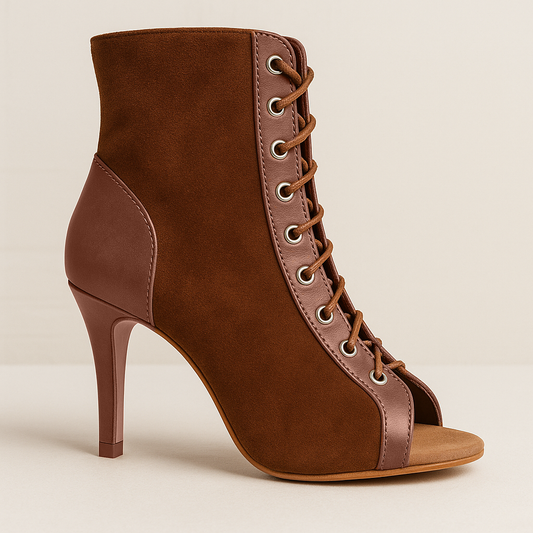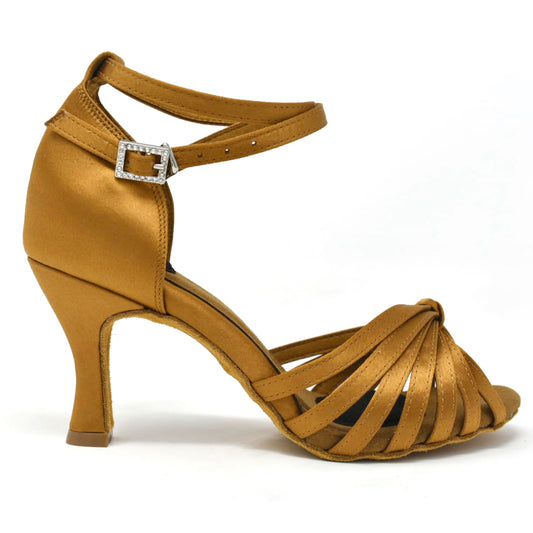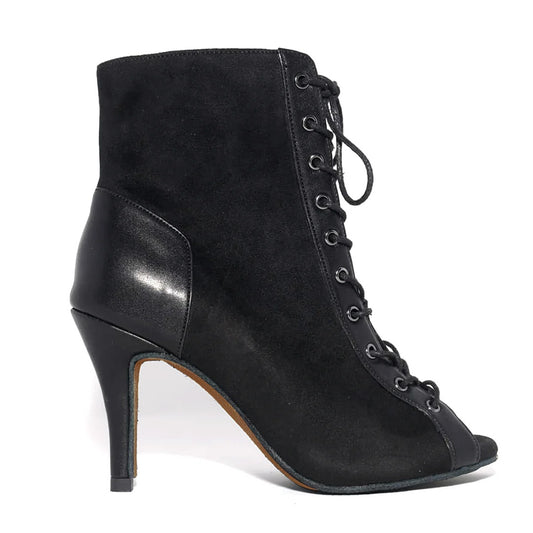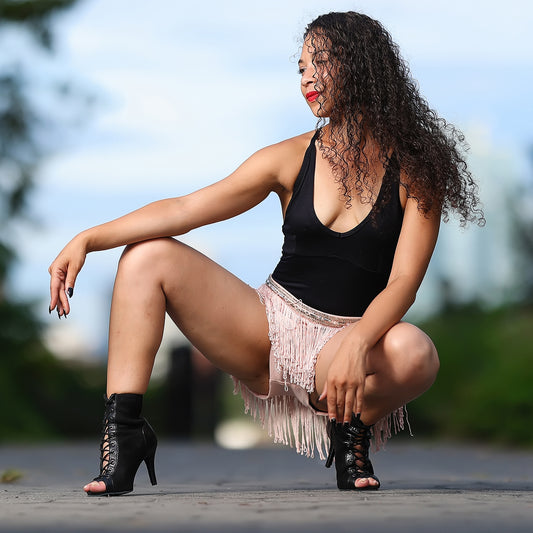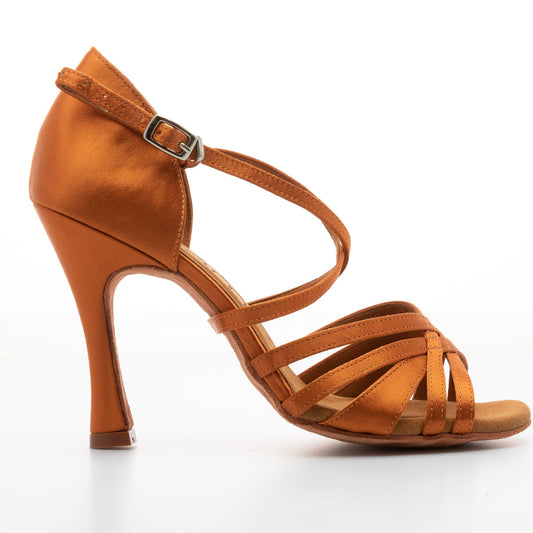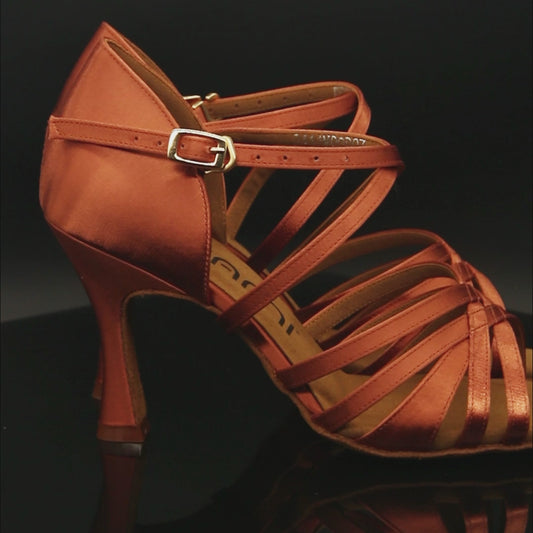
Photo Credit: Newsner
It happens to everyone, finding the perfect dance shoes in your size but as soon as you wear ‘em, your feet start to throb in pain. You could barely walk, much more dance the salsa! But it fits me, how come the shoes are so painful to wear, you thought to yourself.
When shopping around for a pair of dance shoes, you're not just looking at the right length to get the perfect fit. Your shoe size includes your foot width too.
Cramming your feet into a small pair of dance shoes hoping to stretch the material out at some point will only lead to more pain. Although dance shoes are supposed to have a snug fit, shoes that are a size too small could cause a host of foot problems.
Why Foot Shape Matters
The shape of your feet affects the comfortability of the shoes you wear. Even the slightest difference in millimeters could affect the wear of the shoes.
Regular shoes have a loose fit when worn by someone who has narrow feet. Regular shoes may feel uncomfortable to someone with wide feet. People with high arches are more prone to injuries if the shoes they are wearing are suitable for those with low arches. The shape of the feet could also make some people susceptible to certain foot problems.
People with high arches, in particular, are more likely to develop foot problems because the brunt of peak impact is absorbed by the bones and soft tissues. By providing support to problem areas, the body weight is spread evenly to the pads of the feet. This minimizes the risk of developing serious foot problems such as:
- Arch stress
- Bunions
- Hammertoe
- Plantar fasciitis
Measuring Your Dance Shoe Size by Width
The forefoot, which is the widest part of the foot, is often measured to determine the shoe width. Not all brands offer shoes in various widths like Yami Dance Shoes so finding a comfortable pair of shoes is challenging for people with narrow or wide feet. Here in the US, shoe widths are classified to these sizes (narrowest to widest):
- AAA
- AA
- A
- B
- C
- D
- E
- EE
- EEE
The sub-sizes of these width sizes are indicated by the extra letter. The width sizes will also vary between men’s and women’s shoes. Most shoes come with a medium width unless your feet have been measured by a shop that offers customized dance shoes.
Getting the Right Fit
How to get the right pair of dance shoes according to your foot shape? Try these tips:
Get the Measurements Right
Before buying a pair of shoes, have your feet measured first. If you’re buying the shoes from a physical store, the sales representative could measure your foot size and width. If you are shopping online, get the tape measure and check your foot length and width yourself (wrap the tape measure around your forefoot with your foot flat on the floor) then consult our sizing chart.
What you don’t want to do is to choose your shoe size based on your past shoe sizes. Our feet swell and settle throughout the day and they are usually at their largest in the afternoons. What fits then might not fit you right now so to get the perfect fit right the first time, have your feet measured at the end of the day.
Check the Widest Part of the Shoe
Did you know that most of us have one foot that’s bigger than the other? The size and shape of our feet aren’t identical so when you’re shopping for dance shoes, always fit your shoes to your widest foot first. If you chose the smaller foot, the fit might not be as comfortable because the other foot is slightly bigger.
Try the Shoes On
While trying on different shoes, wear each pair and walk around. Get a feel of the fit, the material, etc. Let your toes spread out, let the pads of your feet spread under your weight. Check if certain areas are rubbing too much against the material. Check if the shoes are loose or snug. We suggest trying the shoes late in the afternoon, around the time when the feet have expanded to their widest, to get the best fit.
Yami Dance Shoes Buying Guide: Important Factors to Consider
Toe Length
Toes affect how the body weight is distributed on the feet. Generally, dancers with slightly longer toes are less likely to trip and/or fall. That’s because the body weight is more evenly distributed all over the feet. If your toes are short, look for shoes that could accommodate the wideness of the forefoot with a flexible toe area. The extra room and flexible material will improve your balance.
As for those with long toes, you’ll have plenty of options as far as shoe styles go. One thing to remember is to look for dance shoes with the right length so your long toes are set snugly. Also, avoid shoes with too much flexibility in the toe area because this could impede movement or cause an injury.
Heel Cup
If you dream of one day dancing in high heels but you are a little unsteady on your feet, choose a pair of dance shoes with a stable heel cup. The heel cup is the thickest part of a shoe’s heel. Unfortunately, most shoes have heel cups that are molded to a standard heel cup and the design itself could turn wobbly when you have a narrow or wide heel.
Shoes with loose heels tend to work against the feet. When the shoes wobble during a performance, it is all too easy to lose your balance and sprain your ankle. The worst thing about poor heel design is that it could add undue stress to the legs, hips, and spine too.
Yami dance shoes are different because of the solidly built heel and ergonomic design. Our shoes are crafted according to our strict quality standards to give you the support you need where it counts.
Arches
The structure of the foot is quite complex so every small part of it counts in terms of keeping your feet steady with each step. The arches, which are the deep curves of the feet, improves the body balance by supporting the body weight in the erect position. Also, the arches absorb landing impacts.
Because the arches consist of tendons and ligaments, they could collapse due to an injury and cause severe pain. Yes, the arches could be rebuilt but it's much easier to find a pair of shoes that could provide ample arch support to minimize the risk of injury.
You can always use removable cushion insoles to support the arches whenever you wear a pair of dance shoes or you could simply buy a pair of high-quality shoes with built-in arch support like Yami dance shoes. All of our shoes are designed to support the arches with supple microfiber cushions. These cushions are strategically-placed to give you support where you need it.
Should You Wait Until the Shoes are Broken In?
Dance shoes should have a snug fit but the fit shouldn’t be painful at all. If you bought a pair of shoes that are two sizes too small and try to break them in thinking that they will fit you at some point, the fit will be too tight even when broken in. The shoes should fit properly right off the bat.
It’s best to get sized by a professional to ensure the perfect fit. If you are buying online, check the brand’s sizing chart first before making a purchase. Sometimes the sizes between shoe brands are slightly off. Do the measurements yourself using a soft tape measure. In addition, check the return policy of the shoe brand in case you’ve miscalculated your shoe size and you need to return a pair. It’s a hassle but it’s quite common when you’re buying any type of shoes on the internet.
The Right Pair of Dance Shoes Matters!
Wearing ill-fitting shoes could cause foot pain, muscle strain, and worse, injuries! You need to choose a pair of dancing shoes that molds to your foot shape like a glove. We’re all about giving you the perfect fit here at Yami’s so have fun checking out our newest collection and feel the Yami difference.
References
https://blog.rayrose.com/why-foot-shape-matters-in-ballroom-latin-dancing/
https://www.fredastaire.com/worcester/blog/buy-dance-shoes/
https://www.healthline.com/health/shoe-width
https://www.shoezone.com/Blog/shoe-width-fittings-explained
https://www.healthline.com/health/types-of-feet#concerns

